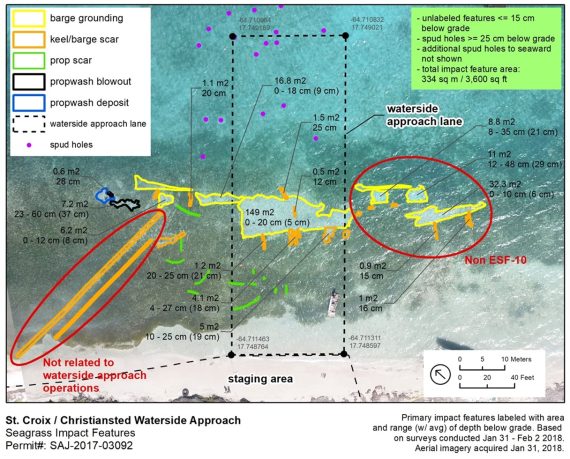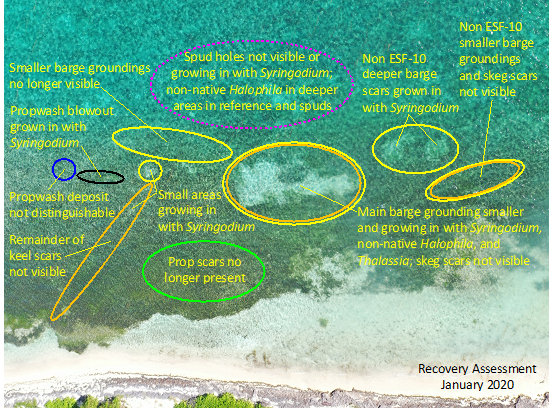Hurricanes Irma and Maria in 2017 caused significant damage to the U.S. Virgin Islands, including displacement of ~500 vessels in nearshore waters and the removal of displaced vessels resulted in emergency response impacts concentrated in a shallow nearshore seagrass area. RPI assessed these areas and implemented emergency restoration in early 2018, focused on returning impacted sediment profiles to natural grade, especially where impacts were below or undercutting seagrass rhizomes. We returned in early 2020 to monitor seagrass recovery in these areas. Sampling for seagrass cover, canopy height, and species composition was conducted two years later to assess the progress of recovery among impact/restoration treatments including unimpacted reference sites. The size and shape of seagrass impacts, degree of sediment displacement, and recruitment of non-native Halophila stipulacea seagrass were important factors influencing seagrass recovery. Syringodium spread across impacted areas was successful in most cases, under both active restoration and natural recovery.
A similar approach was used for seagrass damage during the removal of the 147-ft M/V El Dorado that that stranded and was removed in an area in North Bay, Panama City, Florida after Hurricane Michael in October 2018. RPI surveys after removal operations determined that 0.21 acres of seagrass habitat required stabilization and repair. RPI monitoring the site 1.5 years after completion and found that the impact features that comprised much of the impact acres (sand deposits from the response) mostly returned to natural grade and were observed to have 50?75% seagrass cover.


